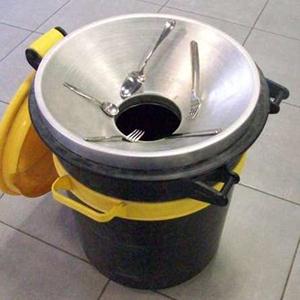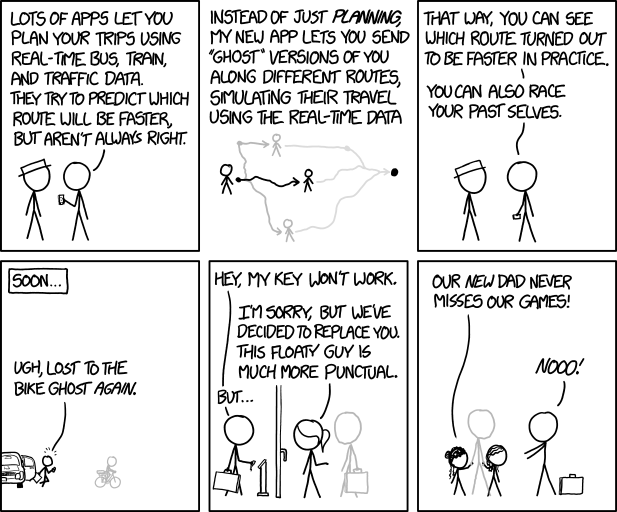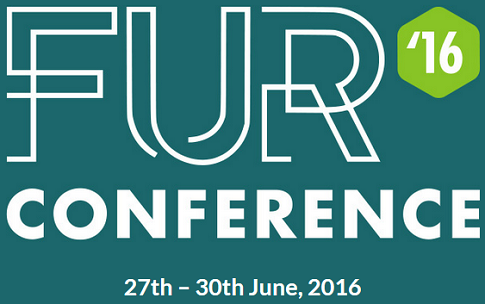Economics and Computation (EC) 2016, July 24-28, Maastricht, Netherlands
 Subscribe to Decision Science News by Email (one email per week, easy unsubscribe)
Subscribe to Decision Science News by Email (one email per week, easy unsubscribe)
ACM CONFERENCE ON ECONOMICS AND COMPUTATION (ACM EC’16) CALL FOR PAPERS

Come see Maastricht’s progress since 1580
The 17th ACM Conference on Economics and Computation will take place July 24-28, 2016 in Maastricht, The Netherlands.
Conference overview
Since 1999 the ACM Special Interest Group on Electronic Commerce (SIGecom) has sponsored the leading scientific conference on advances in theory, systems, and applications at the interface of economics and computation, including applications to electronic commerce.
The Seventeenth ACM Conference on Economics and Computation (EC’16) will feature invited speakers, paper presentations, workshops, tutorials, and poster sessions. EC’16 will be co-located with the 5th World Congress of the Game Theory Society (GAMES 2016), http://www.games2016.nl/, in Maastricht, The Netherlands.
The conference will be held from Sunday, July 24, 2016 through Thursday, July 28, 2016 in Maastricht, The Netherlands. Accepted technical papers will be presented from July 26 through July 28; tutorials and workshops will be held on July 24 and July 25. Accepted papers will be available in the form in which they are published in the ACM Digital Library prior to the conference. AUTHORS TAKE NOTE: The official publication date is the date the proceedings are made available in the ACM Digital Library. This date may be up to two weeks prior to the first day of the conference. The official publication date affects the deadline for any patent filings related to published work.
The focus of the conference is research at the interface of economics and computation related to (but not limited to) the following three non-exclusive focus areas: Theory and Foundations; Artificial Intelligence and Applied Game Theory; Experimental, Empirical, and Applications
Authors can designate a paper for one or two of these focus areas. Each area has dedicated Senior Program Committee (SPC) and Program Committee (PC) members to allow appropriate review of papers.
We are committed to accepting papers of the very highest quality. If we receive a large number of such submissions we will hold some sessions in parallel, grouping these sessions by topic rather than by area.
EC publishes relevant papers on topics and methodologies that include:
Auction theory
Automated agents
Bargaining and negotiation
Behavioral models and experiments
Computational game theory
Computational social choice
Consumer search and online behavior
Crowdsourcing and collective intelligence Econometrics Economics of information Equilibrium computation Experience with e-commerce systems and markets Foundations of incentive compatibility Game-theoretic models of e-commerce and the Internet Information elicitation Machine learning Market algorithms Market design Market equilibrium Matching Mechanism design Platforms and services Prediction markets Preferences and decision theory Price of anarchy Privacy Recommender systems Reputation and trust systems Revenue optimization, pricing, and payments Social networks Sponsored search and other electronic marketing Trading agents Usability and human factors in e-commerce applications User-generated content and peer production
PAPER SUBMISSION
Submissions should be made at http://www.sigecom.org/ec16/papers.html
The conference is soliciting full papers (as well as workshop and tutorial proposals; see below) on all aspects of research covered by the conference. Submitted papers should clearly establish the research contribution, its relevance, and its relation to prior research. All submissions must be made in the appropriate format, and within a specified length limit; details and a LaTeX template can be found at the submission site. Additional pages beyond the length limit may be included as appendices, but will only be read at the discretion of the reviewers.
IMPORTANT NOTICE: To accommodate the publishing traditions of different fields, authors of accepted papers can ask that only a one page abstract of the paper appear in the proceedings, along with a URL pointing to the full paper. Authors should guarantee the link to be reliable for at least two years. This option is available to accommodate subsequent publication in journals that would not consider results that have been published in preliminary form in a conference proceedings. Such papers must be submitted electronically and formatted just like papers submitted for full-text publication.
Simultaneous submission of results to another conference with published proceedings is not allowed. Results previously published or presented at another primarily archival conference prior to EC, or published (or accepted for publication) at a journal prior to the submission deadline to EC, will not be considered. Simultaneous submission of results to a journal is allowed only if the author intends to publish the paper as a one page abstract in EC’16. Papers that are accepted and appear as a one page abstract can be subsequently submitted for publication in a journal but may not be submitted to any other conference that has a published proceedings.
A separate call for posters will be announced later.
WORKSHOP AND TUTORIAL PROPOSALS
The conference is soliciting proposals for tutorials and workshops to be held in conjunction with the conference. Tutorial proposals should contain the title of the tutorial, a two-page description of the topic matter, the names and short biographies of the tutor(s), and dates/venues where earlier versions of the tutorial were given (if any). Workshop proposals should contain the title of the workshop, the names and short biographies of the organizers, and the names of confirmed or candidate participants. Workshop proposals should also include a two-page description describing the theme, the reviewing process for participants, the organization of the workshop, and required facilities for the workshop. Informal ideas for workshops or tutorials can also be sent without a full proposal to the workshop and tutorial chairs at any time. Submission information can be found on the conference website.
KEY DATES
February 23, 2016: Full electronic paper submissions due. Please see http://www.sigecom.org/ec16/papers.html
March 8, 2016: Workshop and Tutorial proposals due. Send to: ec16-workshops-chair@acm.org and ec16-tutorial-chair@acm.org respectively March 22, 2016: Tutorial & workshop proposal accept/reject notifications April 19, 2016: Reviews sent to authors for author feedback April 22, 2016: Author responses due May 10, 2016: Paper accept/reject notifications May 30, 2016: Camera-ready version of accepted papers due July 24-25, 2016: Conference Workshops and Tutorials July 26-28, 2016: Conference Technical Program
ORGANIZING COMMITTEE
General Chair:
Vincent Conitzer, Duke University
ec16-general-chair@acm.org
Program Chairs:
Dirk Bergemann, Yale University
Yiling Chen, Harvard University
ec16-pc-chairs@acm.org
Workshop Chair:
Sebastien Lahaie, Microsoft Research
ec16-workshops-chair@acm.org
Tutorial Chair:
Ron Lavi, Technion
ec16-tutorial-chair@acm.org
Senior Program Committee:
Theory and Foundations:
Moshe Babaioff, Microsoft Research
Alessandro Bonatti, Massachusetts Institute of Technology Gabriel Carroll, Stanford University Shuchi Chawla, University of Wisconsin–Madison Richard Cole, New York University Costis Daskalakis, Massachusetts Institute of Technology Michal Feldman, Tel Aviv University Jason Hartline, Northwestern University Robert Kleinberg, Cornell University & Microsoft Research Fuhito Kojima, Stanford University Vahab Mirrokni, Google Michael Ostrovsky, Stanford University Aaron Roth, University of Pennsylvania Philipp Strack, University of California, Berkeley Eva Tardos, Cornell University Glen Weyl, Microsoft Research
Artificial Intelligence and Applied Game Theory
Martin Bichler, TU München
Sushil Bikhchandani, University of California, Los Angeles Felix Brandt, TU München Arpita Ghosh, Cornell University Ian Kash, Microsoft Research Kate Larson, University of Waterloo Ariel Procaccia, Carnegie Mellon University Jenn Wortman Vaughan, Microsoft Research Rakesh Vohra, University of Pennsylvania Michael Wellman, University of Michigan
Experimental, Empirical, and Applications
Itai Ashlagi, Stanford University
Dan Goldstein, Microsoft Research
Panos Ipeirotis, New York University
Jakub Kastl, Princeton University
Dan Levin, Ohio State University
Muthu Muthukrishnan, Rutgers University
Georgios Zervas, Boston University
Image Credit: “Maastricht-Bellomonte” by Philippo Bellomonte – Drawing. Licensed under Public Domain via Commons – https://commons.wikimedia.org/wiki/File:Maastricht-Bellomonte.jpg#/media/File:Maastricht-Bellomonte.jpg












